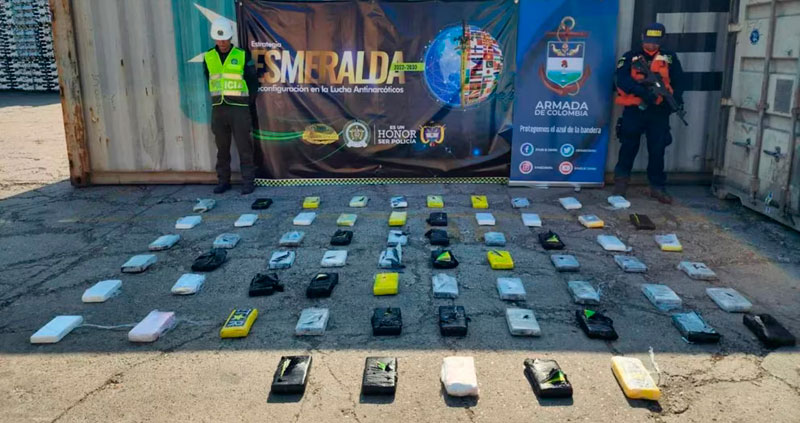The National Navy found 65 kilos of cocaine floating on the Magdalena River, near the dock of the Port of Barranquilla, when it was conducting search and maritime control operations. This was announced by the captain of the ship Manuel Luna, commander of the Task Force Against Drug Trafficking No.73 “Neptuno”.
The officer explained that thanks to this seizure, drug traffickers were prevented from receiving money to finance their criminal structures and the sale of 164,000 doses of cocaine, which has already been made available to the competent authorities.
“With this result, more than 2.2 million dollars stop entering the logistical and financial structures of drug trafficking organizations and the commercialization of 164,000 doses of cocaine on the streets of the world was avoided,” the Navy explained in a statement.
It is worth mentioning that the Magdalena River, with a trajectory of 1,558 kilometers, between the Colombian Massif (where it is born) and the Caribbean Sea (where it flows into), is the most important in the country and is home to more than 700 municipalities and small villages on its banks. or hamlets.
It may interest you: The Attorney General’s Office requested information on the construction project of the military base on Gorgona Island
The 65 kilos of cocaine were divided into two packages. The uniformed officers of the Coast Guard Unit proceeded to review them and found the cocaine stored in rectangular-shaped packages and were able to verify that the substance was cocaine hydrochloride thanks to an Approved Preliminary Identification Test (PIPH).
The UN warned that cocaine production reached record levels in Colombia, Peru and Bolivia
Coca cultivation shot up 35% between 2020 and 2021, reaching a record level, according to a United Nations (UN) report published this Thursday, which points to the appearance of new trafficking centers in southeastern Europe and Africa.
It may interest you: The director of a prison was extorting a prisoner: he was asking for money so as not to take away his benefits
In 2021 there were more than 300,000 hectares of coca plantations in Colombia, Peru and Bolivia, the three countries where the cultivation fields are concentrated, according to the United Nations Office on Drugs and Crime (UNODC), based in Vienna. (Austria).
Once collected, the leaves are delivered to chemists who mix them with gasoline, lime, cement, and ammonium sulfate to obtain a white paste.
This paste is then enriched with a cocktail of acids and solvents. In 2020, cocaine production amounted to more than 2,000 tons, a record, according to the report. Following a temporary slowdown caused by the covid-19 pandemic, global production has skyrocketed in the past two years.
In addition to the expansion of coca bush cultivation, the UNODC explains this strong increase by “improvements in the transformation process” of the coca bush into cocaine hydrochloride.
Likewise, the agency points to a “constant increase” in demand in the last decade and seizures that reached the record figure of almost 2,000 tons in 2021.
Although the cocaine market remains highly concentrated in the Americas and parts of Europe, the report warns that there is great potential for expansion in Africa and Asia.
“The increase in the global supply of cocaine should put us all on high alert,” UNODC Executive Director Ghada Waly was quoted as saying in the statement.
The report also analyzes the emergence of new cocaine trafficking hubs, noting that countries in South East Europe and Africa are increasingly being used as key transit areas for the drug.
North Sea ports such as Antwerp, Rotterdam and Hamburg have eclipsed the traditional entry points in Spain and Portugal for cocaine reaching Western Europe.
Traffickers are also diversifying their routes in Central America, sending more and more cocaine to Europe.
(With information from AFP)
